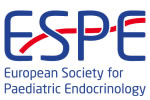ESPE2023 Poster Category 1 Diabetes and Insulin (55 abstracts)
The impact of covid-19 pandemic on the incidence type 1 diabetes in children
Nataliia Kurmacheva , Michail Svinarev , Yuriy Chernenkov , Olga Gumeniuk & Vera Aranovich
Saratov State Medical University, Saratov, Russian Federation
Viral infections may increase the risk of developing type 1 diabetes (T1D), and recent reports suggest that Coronavirus Disease 2019 (COVID-19) might have increased the incidence of pediatric T1D (M. Rahmati et al., 2022). In general, the course of viral infection in children is mild, the question of the long-term effects of COVID-19 on a child and adolescent, in particular, on pancreatic beta cells, remains unclear.
Purpose: To analyze the incidence of diabetes mellitus in children in the conditions of the COVID-19 pandemic.
Patients and methods: We examined the trends in diabetes 1 type prior to and following the onset of the COVID-19 pandemic in Saratov region.
Results: Compared with pre-COVID-19 pandemic, the number of pediatric new-onset T1D during in the 2020 and 2021 years of the COVID-19 pandemic increased in 1.3 and 1.2 times respectively. The incidence rate of T1D in the 2019 was 24.74 per 100 000 children, in the 2020 – 31.92 per 100 000 and in the 2021 – 28.43 per 100 000. Compared with pre-COVID-19 pandemic levels, the median glucose, and HbA1c values in newly diagnosed T1D children after the COVID-19 pandemic increased by 7.8% and 9.1%, respectively.
Conclusion: A significant increase in T1D cases occurred following the onset of the COVID-19 pandemic in Saratov region. Higher glucose and HbA1c values in newly diagnosed T1D children after the COVID-19 pandemic mandates targeted measures to raise physician awareness.



